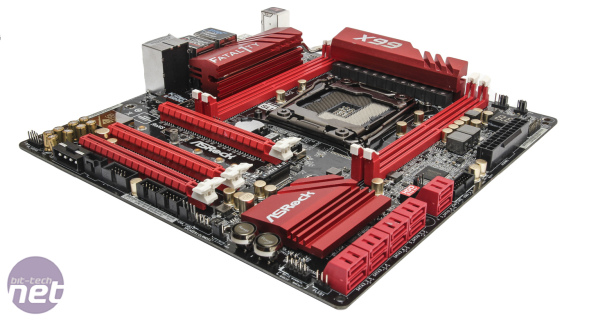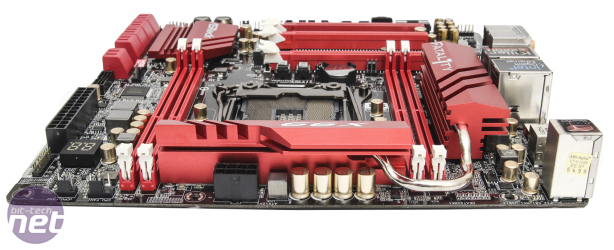
Performance Analysis
The Fatal1ty X99M Killer had no issues running our 2,666MHz Corsair Vengeance DDR4 memory at its native frequency just by setting the right speed and timings in the BIOS, however, like most other boards we've tested, neither of the two reported XMP profiles offered the correct stock settings. We also saw a slight increase in power consumption moving from 2,133MHz to our standard 2,666MHz too, although there were no issues with straps or the CPU locking itself at it's maximum turbo frequency so all is well. In fact, it posted the equal-lowest idle power consumption at stock speed.Performance on the whole was very good at stock speed and the ASRock Fatal1ty X99M Killer was rarely out of the top three in the graphs. The exceptions were Terragen 3, where it took 16 seconds longer than the top-scoring Asus X99 Deluxe, although this is due to the latter forcing the CPU to its turbo frequency all the time when using 2,666MHz RAM and having a much higher power draw as a result.
The audio performance was exemplary, with ASRock's numbers all but replicating themselves in our testing. The Noise and Dynamic Range tests were the best on test although the Total Harmonic Distortion was a little high. There were no issues to report with our storage benchmmarks either; both the M.2 port and SATA 6Gbps ports were on par with most other boards.
Click to enlarge
With the Fatal1ty X99M Killer sporting the joint highest overclock of 4.3GHz, it turned the tables and it recorded the lowest (read: best) time in Terragen 3 and scored very highly in the other tests too, coming top in both PCMark 8 tests and second in Cinebench R15 too. the only downside to the extra grunt provided by the overclock is that we needed 1.34V to get there. This saw the Fatal1ty X99M Killer post the highest overclocked load power draw on test at a sky high 508W, although at idle this dropped back to a comparatively good 110W.
Click to enlarge
Conclusion
We're actually quite taken with the ASRock Fatal1ty X99M Killer. It looks fantastic and despite its small size, it's more than up for some lofty overclocking. It's not overloaded with features, but includes the necessities plus a few more that you'll likely find useful too. The only glaring thing it's missing hardware-wise is SATA Express and perhaps WiFi, but M.2 is arguably the more important next-gen storage interface to support at the moment and it is here in full unlike with the EVGA X99 Micro.Performance at both stock and overclocked settings was very good, with the 4.3GHz overclock being the equal best we've seen and it shows that despite its small size, the ASRock Fatal1ty X99M Killer lacks nothing when it comes to overclocking prowess. The only other gripe is that in order for two-way GPU setups to benefit from two full bandwidth PCI-E slots, you'll need to use the top two, which means dual-slot cooler equipped graphics cards can suffer if they're air-cooled.
Other larger boards have managed to get round this by using the third slot as the second full speed slot, but as it stands, you'd be well advised to either use a single powerful GPU with the ASRock Fatal1ty X99M Killer or water-cool a two-way setup. If going micro-ATX is a must, the ASRock Fatal1ty X99M Killer is a much better option than EVGA's X99 Micro in pretty much every way - it's easier to overclock, better at overclocking, better looking and has more features, all for the same price. If you also have the option of a full-size board, though, then there are other options. MSI's X99S SLI Plus is cheaper and just as good at overclocking, but for micro-ATX case owners, ASRock's Fatal1ty X99M Killer is the board to buy.

-
Speed41 / 45
-
Features23 / 30
-
Value21 / 25


MSI MPG Velox 100R Chassis Review
October 14 2021 | 15:04










Want to comment? Please log in.